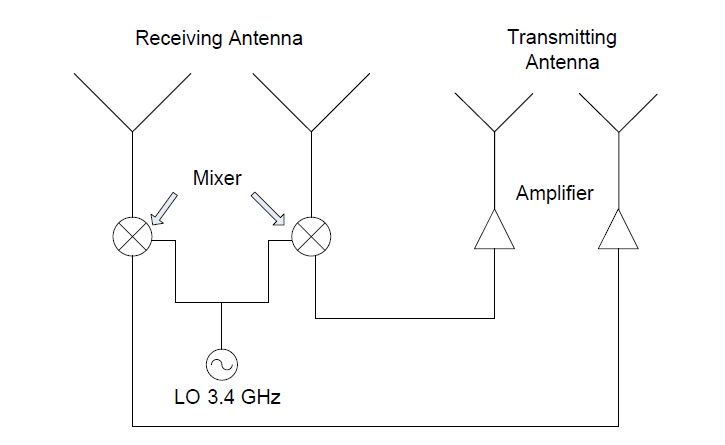Wireless Charging Principle-Radio Frequency Power Transmission
Today we use RF (radio frequency) to deliver information so in theory it can also be used for energy transmission, and in fact it can do. Radio frequency wireless power transfer using microwaves overcomes the distance limitations encountered in resonant and induction coupling methods. Results indicate that charging can be obtained within a radius of up to 1.5 meters.But the RF wireless charging is not the WiFi type that your phone gets powered automatically when you enter your house.
The transmitting antenna array uses surface-wave-suppressing circularly polarized microstrip patches as the array elements. The receiving antenna array operates at 2.4 GHz to receive the interrogating signal. The received signal is mixed with a local oscillator(LO) signal in an up-converting mixer to produce a 5.8GHz transmitted signal. The transmission of the output power of a transmitting antenna to a receiving antenna.

Due to three major drawbacks: 1.the interference with the WiFi that will cause the phone being charged can’t connect to WiFi; 2. the harmful radiation to human bodies; 3. great energy loss in transmission. It’s not hard to see that overcoming such drawbacks will be extremely difficult. An American company named Energous which has concentrated on RF wireless powering over the years has released its WattUp system which places an RF generator device at the power source, then locates devices to be charged via Bluetooth, and in the devices to be charged there is a RF receiver chip which receives the RF and convert the received RF to power energy. At present the Wattup technology has been applied in practice, including a skin sensor with the WattUp RF receiving chip built in from the medical equipment manufacturer CVR Global, a smart ID card and a hearing aid with the WattUp RF receiving chip built in from the Korean SK Telesys, as well as some RF wireless chargers for phones and smart pens. But, all those applications are near-field, low-power RF wireless charging, and the mid-field wireless charging product which can cover the whole desktop.
Another company called Humavox from Israel is also doing the RF power transmission research, and its product is a jar and people drop their electronic devices into the jar for powering, that seems like the working of the microwave oven. Humavox says their product saves the trouble of having to position the electronic device on the wireless charging pad comparing with the power transmission by coil coupling.
- Pre:Wireless Charging Principle-Magnetic Inductive Power Transmi 2020/2/26
- Next:Top 10 Wireless Charger Brands That Users Love 2020/1/13
